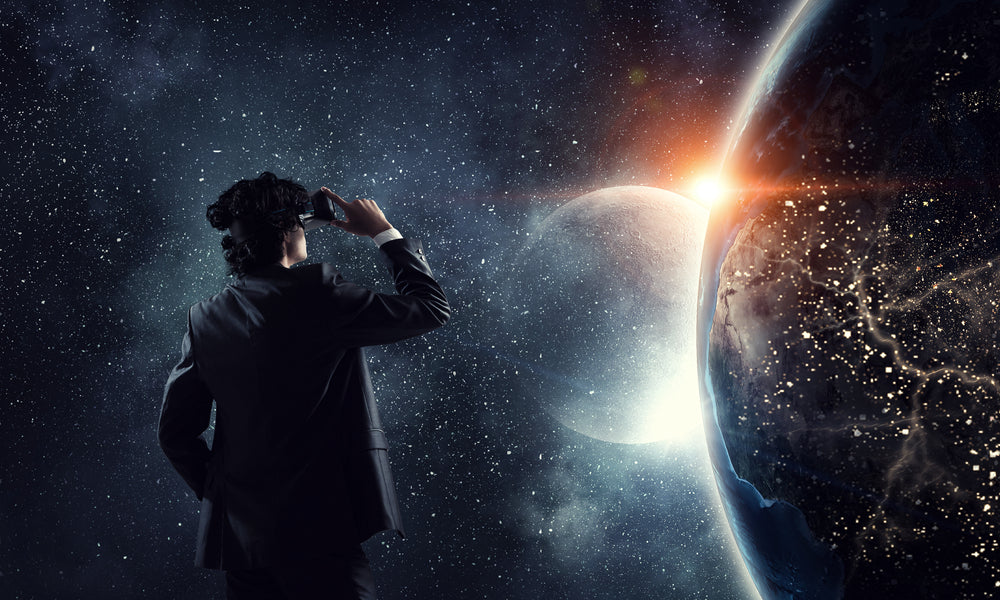
Largest Virtual Universe Will Be Free to Explore
Share

An international team of researchers and developers has generated an entire virtual universe that everyone can access online. This virtual universe is called Uchuu, taken from the Japanese word that means Outer Space. It is currently the largest and most realistic simulation of the universe.
Uchuu - Largest Virtual Universe
Uchuu has a framework encompassing 9.63 billion light-years per side. It is designed with 2.1 trillion particles. Each side of the cube-based model stretches three-quarters of the distance from Earth to the most distant galaxies.
According to its researchers, they developed Uchuu by combining these simulations. They hoped that its design would help other researchers in the field of astronomy to study its evolution. Combining the simulations they have developed, users can follow the development of dark matter haloes and subhaloes, which span those dwarf galaxies to massive galaxy clusters.
However, users who wish to see their house or a specific planet will be disappointed to learn that Uchuu is limited only to showing individual galaxies.
But aside from its sheer size and intricate detail, Uchuu is unique in simulating the cosmos over 13.8 billion years. That means that you can use Uchuu to simulate our cosmos from the Big Bang to our modern age.
According to a researcher who developed Uchuu, Julia Ereza, "Uchuu is like a time machine." Users can simulate Uchuu to go back or go forward in time to see the universe's evolution. Users can zoom in on a single galaxy or zoom out to visualize the whole cluster. Uchuu will allow you to see everything happening in the universe. This makes Uchhu an essential tool one can use to study the cosmos.

The Development of Uchuu
Uchuu was developed using the most powerful supercomputer designed for astronomy called ATERUI II.
This supercomputer utilizes 1005 nodes and runs with more than 40,000 cores. It uses 20 Intel Xeon Gold with 6148 Processors, each with 2.4 GHz. It also has 385 terabytes and 6.5 petabytes of disk space.
With such a powerful computing system, the ATERUI II can calculate the motions of all the hundreds of billions of stars in the universe. However, despite its massive computing power, the researchers still took a year to simulate and produce the virtual universe of Uchuu.
The completion of Uchuu entailed 20 million computer hours, which produced three petabytes of information. In layman's terms, the equivalent of this power is 3,000 laptops with a terabyte of memory each.
Simulation Astronomy
The development of Uchuu is a project under a new type of astronomy called "simulation astronomy." This field uses supercomputers to numerically solve equations. The ATERUI II is one of these supercomputers which aims to offer a more realistic simulation of the universe by utilizing its excellent calculation speed.

Astronomy and Virtual Reality
In recent years, researchers and scientists have been working to further develop and incorporate astronomy along with virtual reality technology. With the help of an advanced VR gaming headset, scientists have found ways to use their progress to help astronomers study the universe.
Tom Grubb, an engineer at NASA's Goddard Space Flight Center, believed that VR and AR are valuable tools to further study the number of stars in the galaxy. In fact, his team has used a VR environment to research and examine a stellar animated neighborhood. Using simulations through complex calculations, they intuitively observed the stars' paths and positions in a three-dimensional space that provided them with critical insights.
Another astronomer from NASA named Marc Kunchner further pointed out the use of VR technology. According to him, planetariums upload all the databases to present the cosmos. However, as astronomers, they won't build a planetarium in their office to study the cosmos. But with a VR headset, they can put it on and explore their own virtual planetarium.
In fact, Grubb and his colleagues have created several software projects to help with astronomical databases and engineering to make it work in VR. Just as the heavy industry is starting to incorporate VR and AR, NASA is also looking to use its technology for its cross-site collaboration.
According to Grubb, using a virtual environment will allow astronomers and researchers to look at a 3D star map. This offers new opportunities for people to discover new things about our galaxies and the universe.
The software Grubb and his team are developing will offer a virtual environment to point or manipulate it. Users can build mockups. They can work out on iterating the objects existing in the VR environment.
With VR technology, astronomers and researchers are now finding ways to further explore the universe without spending too much money on releasing space probes.
Source:
